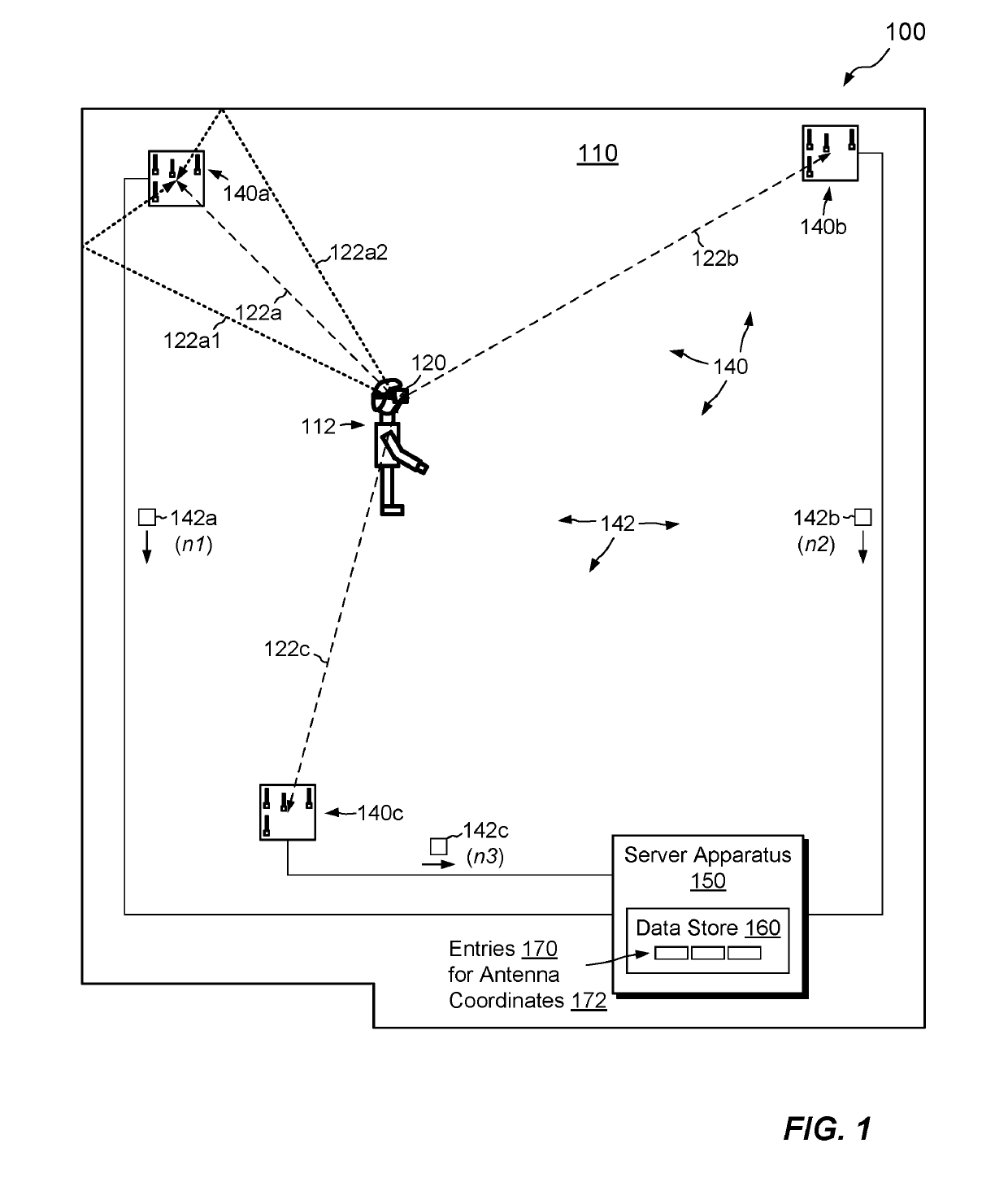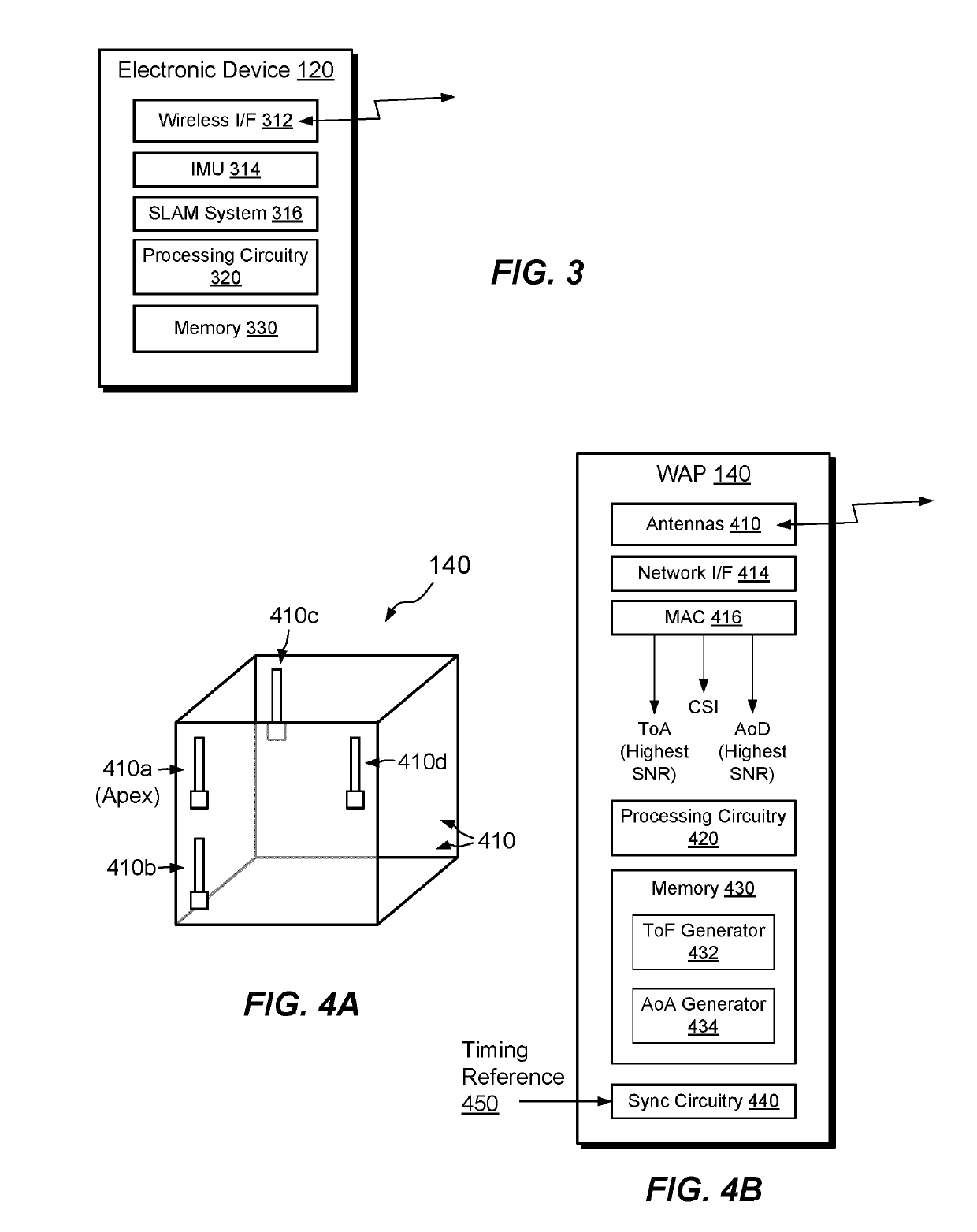Locating devices based on antenna coordinates
a technology of antenna coordinates and positioning devices, applied in the field of wireless communication, can solve the problems of ineffective gps, slow device location and location measurement, existing ips solutions, etc., and achieve the effects of stable over time, fast real-time tracking of physical device locations, and quick and efficient determination
- Summary
- Abstract
- Description
- Claims
- Application Information
AI Technical Summary
Benefits of technology
Problems solved by technology
Method used
Image
Examples
Embodiment Construction
[0047]Embodiments of the invention will now be described. One should appreciate that such embodiments are provided by way of example to illustrate certain features and principles of the invention but that the invention hereof is not limited to the particular embodiments described.
[0048]An improved technique for locating devices detects wireless packets using multiple antenna units and generates antenna coordinates in an antenna coordinate system on a per-packet basis. Entries in a data store associate antenna coordinates with Cartesian (physical) coordinates, enabling fast, real-time tracking of physical device locations by simple lookups into the data store based on antenna coordinates.
[0049]Unlike a Cartesian coordinate system, which is smooth and continuous, the proposed antenna coordinate system may be unsmooth and subject to reflection, refraction, diffraction, and dispersion. Regions that are adjacent in Cartesian space are not necessarily adjacent in antenna space, and vice-v...
PUM
 Login to View More
Login to View More Abstract
Description
Claims
Application Information
 Login to View More
Login to View More - R&D
- Intellectual Property
- Life Sciences
- Materials
- Tech Scout
- Unparalleled Data Quality
- Higher Quality Content
- 60% Fewer Hallucinations
Browse by: Latest US Patents, China's latest patents, Technical Efficacy Thesaurus, Application Domain, Technology Topic, Popular Technical Reports.
© 2025 PatSnap. All rights reserved.Legal|Privacy policy|Modern Slavery Act Transparency Statement|Sitemap|About US| Contact US: help@patsnap.com



